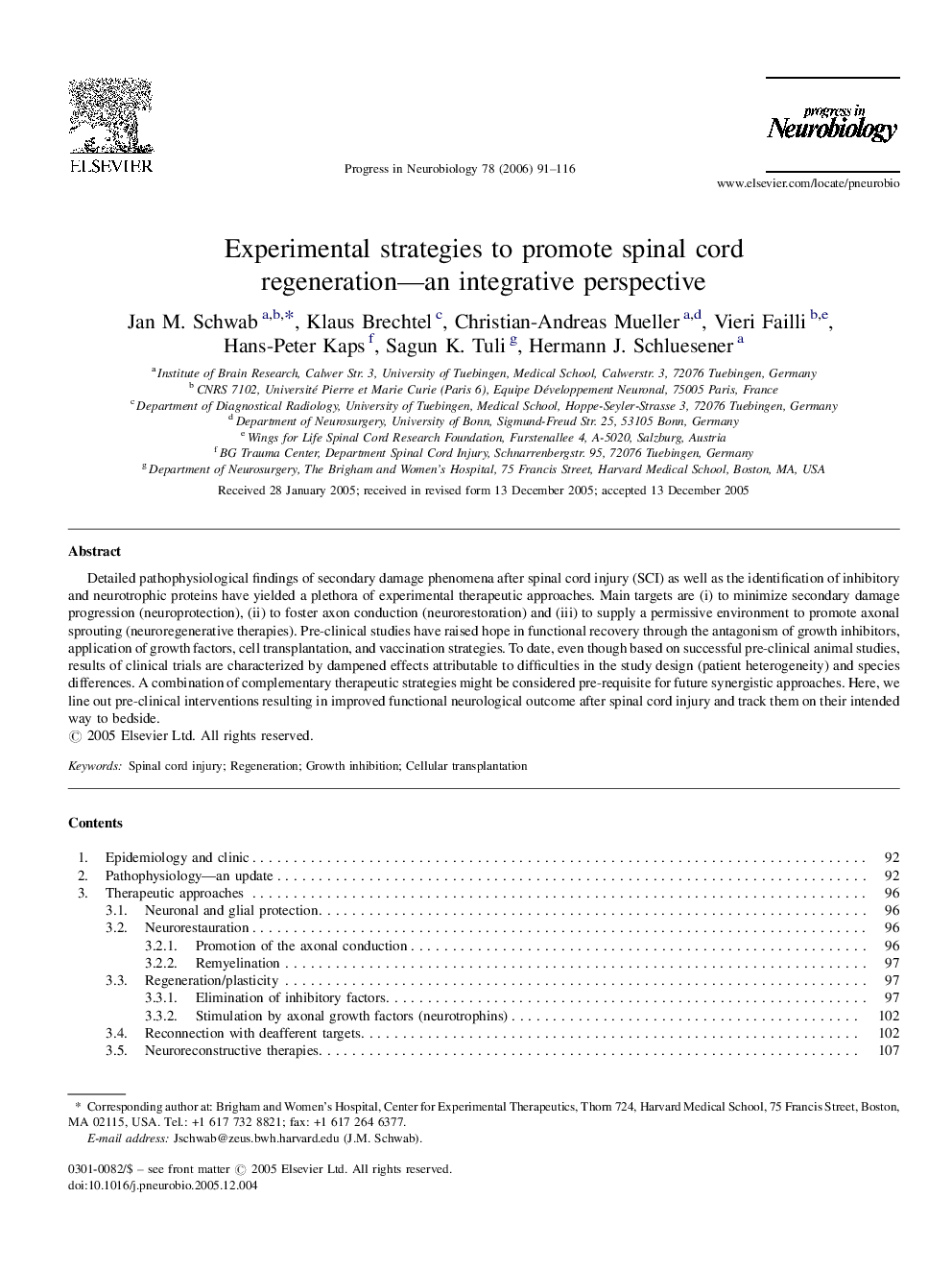| Article ID | Journal | Published Year | Pages | File Type |
|---|---|---|---|---|
| 4354054 | Progress in Neurobiology | 2006 | 26 Pages |
Detailed pathophysiological findings of secondary damage phenomena after spinal cord injury (SCI) as well as the identification of inhibitory and neurotrophic proteins have yielded a plethora of experimental therapeutic approaches. Main targets are (i) to minimize secondary damage progression (neuroprotection), (ii) to foster axon conduction (neurorestoration) and (iii) to supply a permissive environment to promote axonal sprouting (neuroregenerative therapies). Pre-clinical studies have raised hope in functional recovery through the antagonism of growth inhibitors, application of growth factors, cell transplantation, and vaccination strategies. To date, even though based on successful pre-clinical animal studies, results of clinical trials are characterized by dampened effects attributable to difficulties in the study design (patient heterogeneity) and species differences. A combination of complementary therapeutic strategies might be considered pre-requisite for future synergistic approaches. Here, we line out pre-clinical interventions resulting in improved functional neurological outcome after spinal cord injury and track them on their intended way to bedside.
